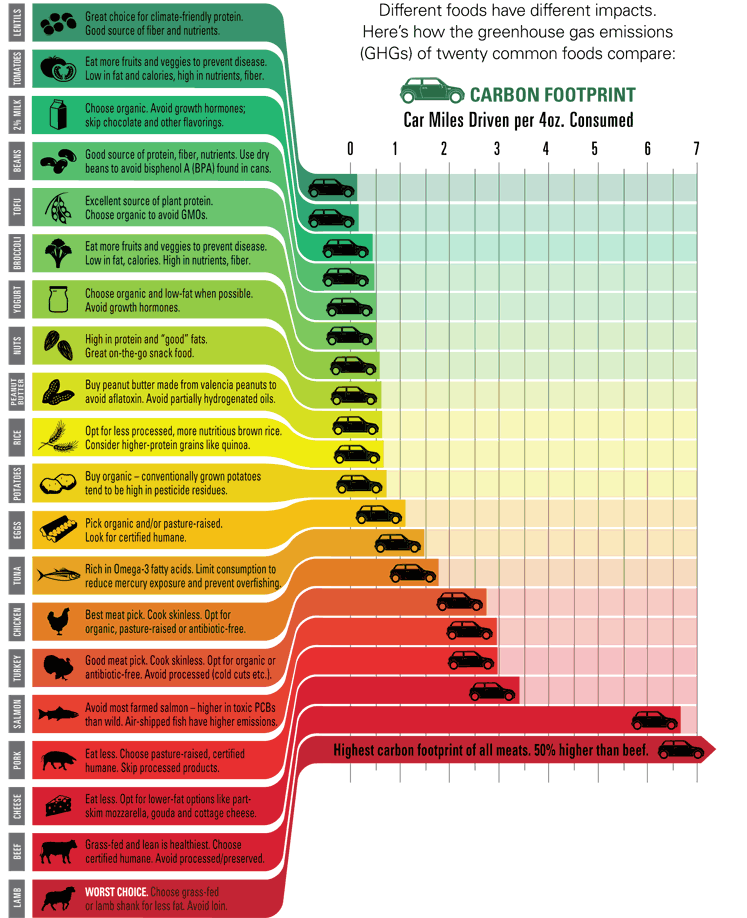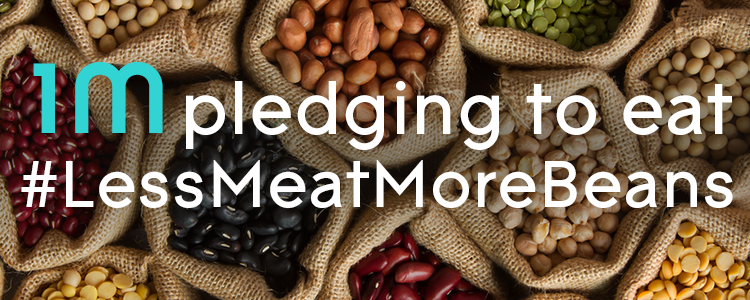Does an imported tin of chickpeas have a larger impact on the planet than a t-bone steak?
When I tell people that I'm reducing my meat intake to try to lower my carbon footprint, I am met with varied responses. Some people are understanding. Others are surprised that animal rights doesn't play a role in my decision. And some are quick to point out other areas of my consumption that are not worthy of environmental stewardship. For instance the lentils on my plate that probably travelled halfway across the world along with several carbon miles to get there. So am I a hypocrite?
Every single day, we're faced with decisions that are either planet-friendly or not planet-friendly. And it's not all black and white. My entire existence involves me navigating the grey area in between the two. But some decisions are trickier than others. One thing I grapple with (when I don't have time to make my own) is choosing between the plastic covered locally produced pasta and the cardboard packaged imported pasta at the supermarket. One was produced with minimal carbon miles but has non-biodegradable packaging, while the other has biodegradable packaging but comes with a larger amount of carbon miles. The same thing goes for the locavore vs herbivore conundrum. So what's better for the planet - eating local or avoiding meat?
First of all, I'd just like to say that there's no need to choose between the two. Eating locally grown, sustainably produced plant-based foods is definitely the best way to go. But it's something worth looking into.
Food miles
'Food miles' refers to the total distance food travels between its cultivation, processing and when it reaches a customer at the point of sale. Put simply, it's how far your food had to travel to get to your plate. Some studies consider food miles to be negligible in comparison to the negative impact of meat production. While others give food miles a bigger weight in harming our planet.
The impact food miles has on the climate depends on a number of factors. The type of vehicle that is used to transport food plays a large role in the amount of carbon emissions released during the journey. Shipping generally has a much lower footprint than say air freight and trucks. We must also factor in the quantity of food it travels with. For instance a large amount of food travelling by ship will have a significantly lower impact than a smaller amount of food travelling by air freight.
The air freighting of green beans from Kenya into the UK, for example, is highly unsustainable because of the air miles involved. Eating these beans could have a larger impact than eating locally produced pork, depending on the way it is produced.
Meat production
It is widely known that meat production (factory farmed meat in particularly) is responsible for emitting a significant amount of carbon emissions into our atmosphere. The mere existence of cattle contributes to methane emissions, a greenhouse gas that is far more potent than carbon dioxide. And the crops that we grow to feed livestock are causing devastating deforestation in the Amazon rainforest, a stretch of land often referred to as the "lungs of the earth".
Livestock production as a whole accounts for more direct greenhouse gases than all trains, ships, planes and road transportation combined. Considering this, it's fairly safe to assume that if the whole world became vegetarian tomorrow, we would see a larger reduction in greenhouse gas emissions than if the whole world started buying local produce.
But it's important not to lump all livestock into the 'not sustainable' category. Not all meat is created equal. Beef for instance emits on average 5 times the climate-warming emissions than pork or chicken. It also requires 28 times the land and 11 times the water.
This infographic has some details on carbon footprint of different foods.

Not all farms are created equal either. Some cattle farms practice sustainable regenerative farming methods, achieving low carbon or carbon neutrality through offsets. But the truth is, most of us, especially in the developed world are disconnected from where our food comes from. Even the words we use to describe the meat we eat are differentiated from the animal that it comes from. It's not often that you'd hear someone say "I ate a lovely piece of cow at dinner last night". Instead we translate cow into beef from the french word boef and pig to pork. If we were to be more connected with the source of our food, perhaps we would put a larger value on it.
And it's not just land meat that's having an adverse effect on the climate. The seafood industry is driving an overfishing crisis, impacting ecosystems and the climate. The marine animals that we catch in droves from the ocean are generally predators, which are higher up on the food chain. Studies have shown that the removal of these species increases the biomass of smaller fish and zooplankton which results in a higher production of CO2 in marine environments.
So what's the best way forward?
Both eating meat and consuming imported produce has its impact on the planet, just as everything we buy and consume does. So as long as we're choosing to eat locally produced food, reducing our meat intake and if we're eating meat - looking into how it was produced, we're on the right track to a sustainable future.
The most effective way to eat sustainably is to find out where our food comes from. If we're choosing to eat plant-based foods, avoiding food that comes from monoculture practices is key. It's important look out for production methods that conserve water and land, preserve biodiversity and protect soil.


